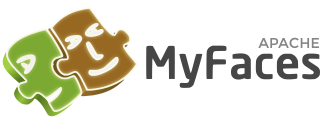
sed is a Unix utility that parses and transforms text, using a simple, compact programming language. It was developed from 1973 to 1974 by Lee E. McMahon of Bell Labs, and is available today for most operating systems. sed was based on the scripting features of the interactive editor ed and the earlier qed. It was one of the earliest tools to support regular expressions, and remains in use for text processing, most notably with the substitution command. Popular alternative tools for plaintext string manipulation and "stream editing" include AWK and Perl.
SNOBOL is a series of programming languages developed between 1962 and 1967 at AT&T Bell Laboratories by David J. Farber, Ralph E. Griswold and Ivan P. Polonsky, culminating in SNOBOL4. It was one of a number of text-string-oriented languages developed during the 1950s and 1960s; others included COMIT and TRAC.
XSLT is a language originally designed for transforming XML documents into other XML documents, or other formats such as HTML for web pages, plain text or XSL Formatting Objects, which may subsequently be converted to other formats, such as PDF, PostScript and PNG. Support for JSON and plain-text transformation was added in later updates to the XSLT 1.0 specification.
In computer science, a preprocessor is a program that processes its input data to produce output that is used as input in another program. The output is said to be a preprocessed form of the input data, which is often used by some subsequent programs like compilers. The amount and kind of processing done depends on the nature of the preprocessor; some preprocessors are only capable of performing relatively simple textual substitutions and macro expansions, while others have the power of full-fledged programming languages.

A chatbot is a software application or web interface that is designed to mimic human conversation through text or voice interactions. Modern chatbots are typically online and use generative artificial intelligence systems that are capable of maintaining a conversation with a user in natural language and simulating the way a human would behave as a conversational partner. Such chatbots often use deep learning and natural language processing, but simpler chatbots have existed for decades.
Jakarta Faces, formerly Jakarta Server Faces and JavaServer Faces (JSF) is a Java specification for building component-based user interfaces for web applications. It was formalized as a standard through the Java Community Process as part of the Java Platform, Enterprise Edition. It is an MVC web framework that simplifies the construction of user interfaces (UI) for server-based applications by using reusable UI components in a page.
Richard S. Wallace is an American author of AIML and Botmaster of A.L.I.C.E.. He is also the founder of the A.L.I.C.E Artificial Intelligence Foundation. Dr. Wallace's work has appeared in the New York Times, WIRED, CNN, ZDTV and in numerous foreign language publications across Asia, Latin America and Europe.
Extensible Application Markup Language is a declarative XML-based language developed by Microsoft for initializing structured values and objects. It is available under Microsoft's Open Specification Promise.
A.L.I.C.E., also referred to as Alicebot, or simply Alice, is a natural language processing chatterbot—a program that engages in a conversation with a human by applying some heuristical pattern matching rules to the human's input. It was inspired by Joseph Weizenbaum's classical ELIZA program.

A dialogue system, or conversational agent (CA), is a computer system intended to converse with a human. Dialogue systems employed one or more of text, speech, graphics, haptics, gestures, and other modes for communication on both the input and output channel.
A dialog manager (DM) is a component of a dialog system (DS), responsible for the state and flow of the conversation. Usually:
The identity transform is a data transformation that copies the source data into the destination data without change.
SCXML stands for State Chart XML: State Machine Notation for Control Abstraction. It is an XML-based markup language that provides a generic state-machine-based execution environment based on Harel statecharts.

Apache MyFaces is an Apache Software Foundation project that creates and maintains an open-source JavaServer Faces implementation, along with several libraries of JSF components that can be deployed on the core implementation. The project is divided into several sub-projects:
In computing, Facelets is an open-source Web template system under the Apache license and the default view handler technology for Jakarta Server Faces. The language requires valid input XML documents to work. Facelets supports all of the JSF UI components and focuses completely on building the JSF component tree, reflecting the view for a JSF application.

Bruce Wilcox is an artificial intelligence programmer.
The following outline is provided as an overview of and topical guide to natural-language processing:
Kuki is an embodied AI bot designed to befriend humans in the metaverse. Formerly known as Mitsuku, Kuki is a chatbot created from Pandorabots AIML technology by Steve Worswick. It is a five-time winner of a Turing Test competition called the Loebner Prize, for which it holds a world record. Kuki is available to chat via an online portal, and on Facebook Messenger, Twitch group chat, Telegram, Kik Messenger, Discord, and was available on Skype, but was removed by its developer. The AI also has accounts on Instagram, TikTok, YouTube, and Twitter, as well as a game on Roblox.
Pandorabots, Inc. is an artificial intelligence company that runs a web service for building and deploying chatbots. According to its website, as of May 2019, 250,000+ registered developers have accessed the platform to create 300,000+ chatbots, logging over sixty billion conversational interactions with end-usersmonthly. Pandorabots implements and supports development of the AIML open standard and makes portions of its code accessible for free under licenses like the GPL or via open APIs. The Pandorabots Platform is "one of the oldest and largest chatbot hosting services in the world." Clients can create "AI-driven virtual agents" to hold human-like text or voice chats with consumers.




